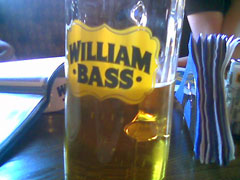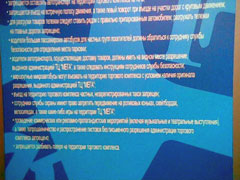Review GSM phone Nokia 6101
Package:
- Handset
- Battery
- Charger
- Adapter for using an old style charger
- Stereo headset
- Manual
Nokia 6101. Live pictures
Rarely the company of Nokia gives a treat to its users by producing clamshell phones, as it more stakes on classical candybars. Nokia 6101 is one of such devices designed as a clamshell with an exterior antenna, two colour displays and a VGA camera. Extra functions that should be mentioned include EDGE, PTT and FM radio.


Nokia 6101 is designed atypically for the Finish company. Those who see it for the first time, usually suppose it is manufactured by some Korean maker, but not Nokia. The body is slightly narrowed on the bottom and the edges are splay, a small exterior antenna is a part of the body. The phone size is average for this class (85x45x24 mm, weight: 97 g). A colour solution, without risk of loss, chosen for the body is a combination of silvery and black. The black surface is easily marked, fingerprints stay on it, though they are hard to notice. The assembly quality and plastic quality are high, here are no problems.


A coupled volume button settled on the left surface, and a PTT one features the right side, all the buttons are rather tough, and pressing is followed by a loud click. A little below the PTT button an IrDA button is placed.
A loudspeaker for playing the call melody is on the top edge, the bottom features an interface (Pop-Port) connector and a charger slot of a new kind. By the way, the kit includes an adapter which allows connecting chargers of an old style.


A strap hole is placed on the bottom end, and to fix the strap you'll have to remove the back cover.
A VGA-camera gap is on the top part; in appearance it resembles the one in LG F2300 and F2400. Like in the mentioned models this one has a square shape and silvery edging. A little below an external cSTN display is placed, it is 96x65 pixels (26x19 mm) in resolution and shows 4096 colours. The screen quality is middling, so that in the sun it completely fades and making out information gets impossible. Both internal and external screens have separate backlighting lamps, which helps saving energy.

In the standby mode you'll see an operator's name, selected profile, clock, signal level and a charge level on the screen. When listening to the radio, you can see the name of the radio station (if it was saved) and the frequency. At an incoming call, either a caller's name or a phone number is shown; however, a picture appears if it was assigned to the contact. A picture bound to a contact is shown as a thumbnail on the bottom of the screen. Much of your imagination is required to make anything on it.
 

Opening the device, you see an averagely sized internal TFT display with the resolution of 128x160 pixels (28x35 mm) capable of up to 65K colours. The screen quality is average, with a bright and clear picture. Though, still it gives way to the ones integrated into Samsung and Motorola's phones.

The phone keypad is made of plastic with a large navi block and an Ok button inscribed into it. Two functional keys, call and cancel buttons are integrated into a single block framing the navi button. This disposition influences the comfort when working in no way, however, adds some unordinary appearance to the keypad.

Number keys are large, placed in three vertical rows. Working with them is comfortable, when entering a number or a message no accidental pressures happen. The blue screen backlighting is uneven, that's why some characters on the keypad are hard to read.

Almost the whole back of the phone is taken by a battery cover. The fastening is reliable, no backlash is observed, and the only thing to mention is it is of thin plastic, pressing even slightly, you might feel it is going to break.
A 760 mAh Li-Ion battery goes with the device. According to the maker, the phone can work for about 350 hours in the standby mode and up to 4 hours in the talk mode. In Moscow it lasted for approximately 2 days in case of 30 minutes of talks a day and up to 30 minutes of using other functions. If talking more, you'll have to charge daily. And full recharging takes about 1.5 hours.

Menu
The main menu looks like vertical lists, and a small icon specifies each item. The first submenu level is designed the same way, and the second one is shown as vertical lists. Number navigation works in the phone, besides, you can add necessary functions to an active-menu for faster access. The left-side button is responsible for accessing the active-menu from standby mode. Besides, you can assign fast access to the necessary menu items from standby mode to the navi button and the right functional one (the default value is calling the phonebook). But that is not all of the settings; voice tags are assignable as well.



The localization is rather good, abbreviations are almost absent. Predictive text input T9 is realized for both Russian and English.
About 3 MB of memory are dynamically distributed among the applications.
Phonebook. The phone memory can contain about 500 contacts; however, the number can reduce at the maximum possible numbers entered for each contact. About 5 numbers can be bound to a name, each allows selecting a type (mobile, work, home, fax). Besides, about 5 extra fields can be filled for each contact - e-mail address, post address, PTT, WEB, or a text note. A picture or a photo can be assigned to a contact; finally, you can create a tag for voice dialing.
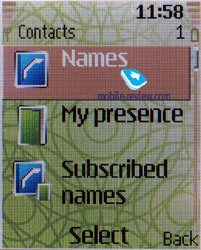
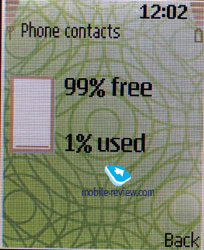

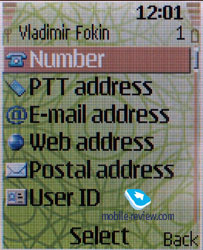
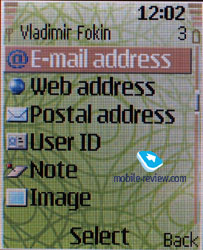
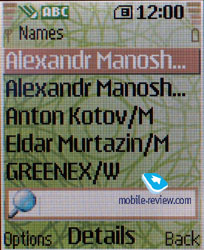
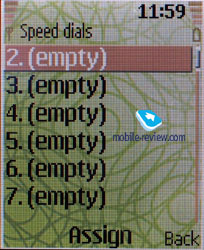
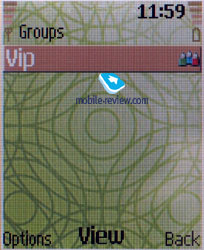
Each contact is available for assigning to any group created by a user. You can keep a name, a call melody and a picture for a group. Fast dialing for 8 numbers is possible.
The first letters of the name are used for search. Both contacts from the internal memory and SIM card are shown, besides you can select only one source to take contacts from.
The realization of the Photo ID function remained the same as in other company models. As we have already told, the external screen shows a tiny photo, with a hard to make out image. The internal screen has the situation a bit improved, and shows photos on 1/3 of the display.
Messages. The device has a support for Nokia Smart Messaging and that allows sending and receiving melodies and plain black and white pictures from compatible devices. Phones by Samsung, LG and some new devices by Motorola support the standard besides Nokia. Up to 10 graphical templates are preset for such messages. Unfortunately the company standard limits the users because an alternative EMS standard is spread wider today and allows not only send and receive melodies and pictures but also format texts. Besides there is a set of 17 smiles and 11 text templates. Flash message that you can also create will only appear on the receiver's screen and won't save in the phone memory or SIM. Also you can use a chat function, then all the messages are shown on the one screen.
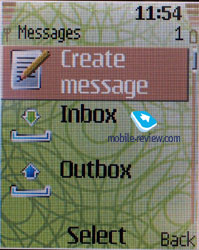
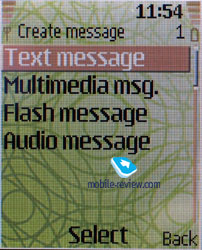
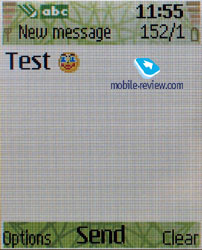
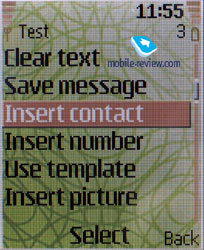
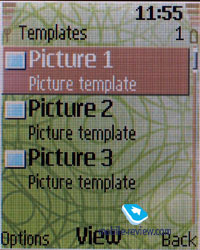
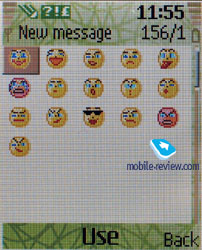

MMS editor is plain and clear. You can create several slides.
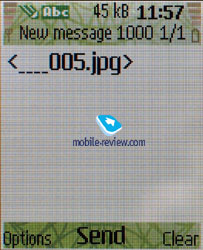
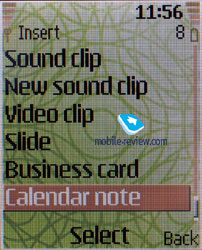
Sound message also can refer to an MMS, instantly a Dictaphone starts to record a voice message.
The device has an integrated mail client working with POP3/SMTP protocols. The possibilities of the client are very poor, it doesn't support attachments, and the device "understands" only one Russian coding. With no alternative program available, you can use this one though.
Call lists. There is a list of 20 incoming, missed and outgoing calls. Similar numbers are united and time of call is specified near them.

Also here are the numbers you sent messages to. Time and data counters are here.
Settings. Totally each of the 6 present profiles can be edited.
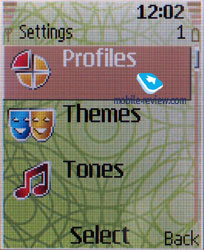
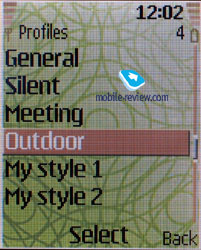
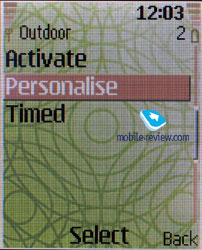

Themes. Three themes are preinstalled in the phone. They allow changing the phone appearance with a colour scheme and wall-papers. Besides, you can download extra themes from the company site.
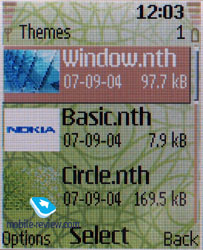
Call signals can be selected from usual, increasing, once, short or silent. A call melody can be set from here and vibra can be turned off. The Vibracall can act simultaneously with a melody.
Display. For both internal and external screens you can select a picture as a wall-paper, a headband and a colour scheme.
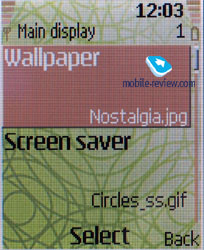
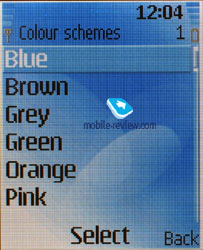


Other phone settings are available here.
Gallery. This is a plain file manager, files are distributed into folders. You can add your own folders.
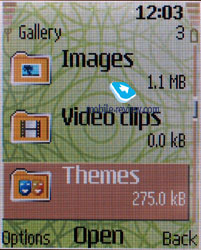
Organizer. One alarm clock is available; it can act daily and on selected days as well. You can select a signal for it and set a recurrence period.
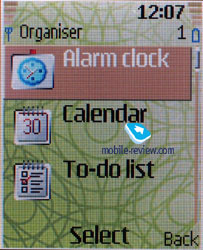
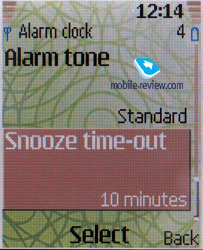
Calendar. You can view it both monthly and weekly with a division into hours. Besides, all the events can be listed. Select a type (meeting, call, birthday, note, and reminder), assign a theme (up to 160 characters), place (about 50 characters), date and time for start and end. A call signal can be chosen and time for a preliminary reminder.
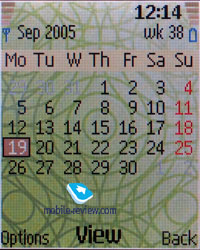
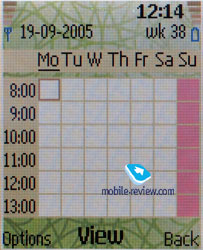

Tasks. You can enter a theme (about 160 characters), set priority (high, medium, low), set date and time, and turn a signal on with an opportunity of specifying the time for a preliminary reminder.
Notes. Plain text notes are possible to create from here. The max number of characters should not exceed 3000.
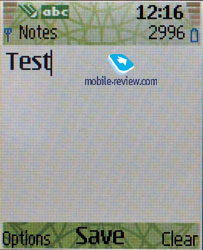
Synchronization. The handset supports work with a standard Nokia Suite including IrDA use.
Here is a plain calculator, a stopwatch with intermediate values and a countdown timer.
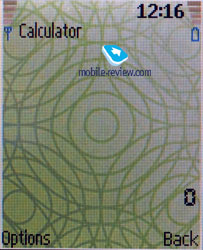
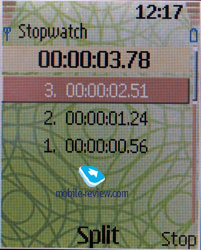
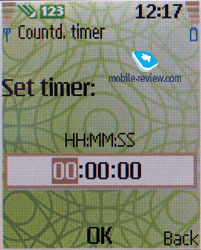
Applications. Three games are placed here: Canal Control (logical game), Golf Tour (everything clear) and Solitaire (a popular card game).
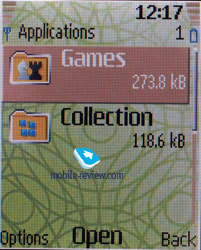
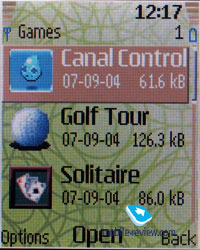
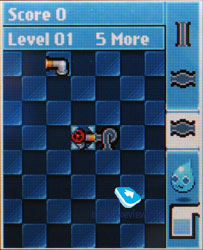
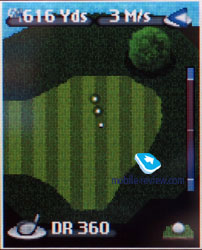
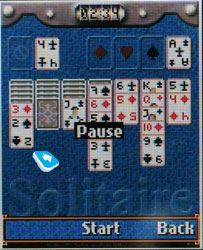
By default an ad clip of Nokia 6101 is stored in a "Collection" folder.

Besides, you can install own Java applications both via WAP and via IrDA. The size of the installed Java application can't exceed 125 KB. An interesting fact is only files less than 80 KB are received via IrDA.
PTT. Everything concerning a Push to Talk function is here.
Internet. Here is a WAP browser version 2.0.

Multimedia. Here you can find a radio, which can work in standby mode. Automatically the device searches for stations and can save them into the memory. Pressing a button on the headset is enough for switching between the stations. Only with a headset connected you can have the radio playing though the loudspeaker.
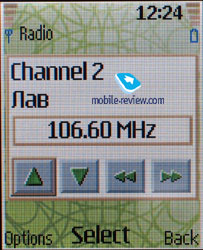
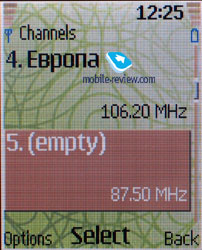

Dictaphone allows both recording in standby mode and during a conversation. The max record duration should not exceed 5 minutes.

Camera. An integrated camera allows VGA photos and a portrait size as well - 80x96 pixels. The photos quality on the screen is middling. On a PC they look not so bad, though not very good. Camera settings are ascetic, to tell the truth. Night mode and three types of photo compression are available. The file format of stored photos is JPEG.

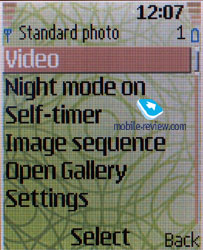
Photos can be viewed either as thumbnails (three photos on the screen), or one by one.
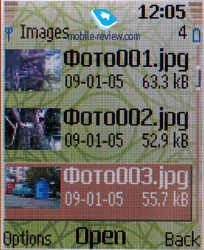
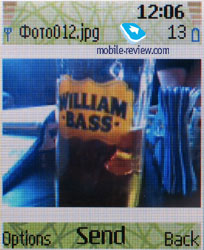
The video recorded is 15 seconds clips in 3GP format (128x96 pixels, with AMR sound). You can set the maximum clip duration, then records can last for several minutes (0.7 MB are enough for two minutes). The clips are of middling quality, and the sound can be different to pronounced phrases. On a PC they look bad as well, and the function is mainly entertaining for use on the phone.

Impressions
The device provides normal connection quality causing no problems. Almost in any case you'll find the loudspeaker volume and microphone sensitivity enough. The 40-tones polyphony sounds well, MP3 files can serve as call melodies. Speakerphone is present; it can be turned on pressing the right functional key during a conversation. The realization is average, the volume is enough not always.
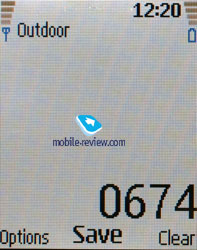
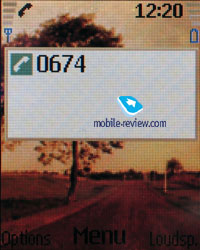

Nokia 6101 is a functional copy of Nokia 6170 in another body only. No peculiar functions are provided to a user. PTT doesn't look attractive for many people. And only EDGE can interest some customers in this model. An unusual design for a Nokia phone can tell positively or negatively on the sales.
For the moment of this review, the average price per a model formed 280 USD, and the device has many rivals in this price diapason.
Vladimir Fokin (vladimir.fokin@mobile-review.com)
Translated by Maria Mitina (maria.mitina@mobile-review.com)
Published — 27 September 2005
Have something to add?! Write us... eldar@mobile-review.com
|




































































